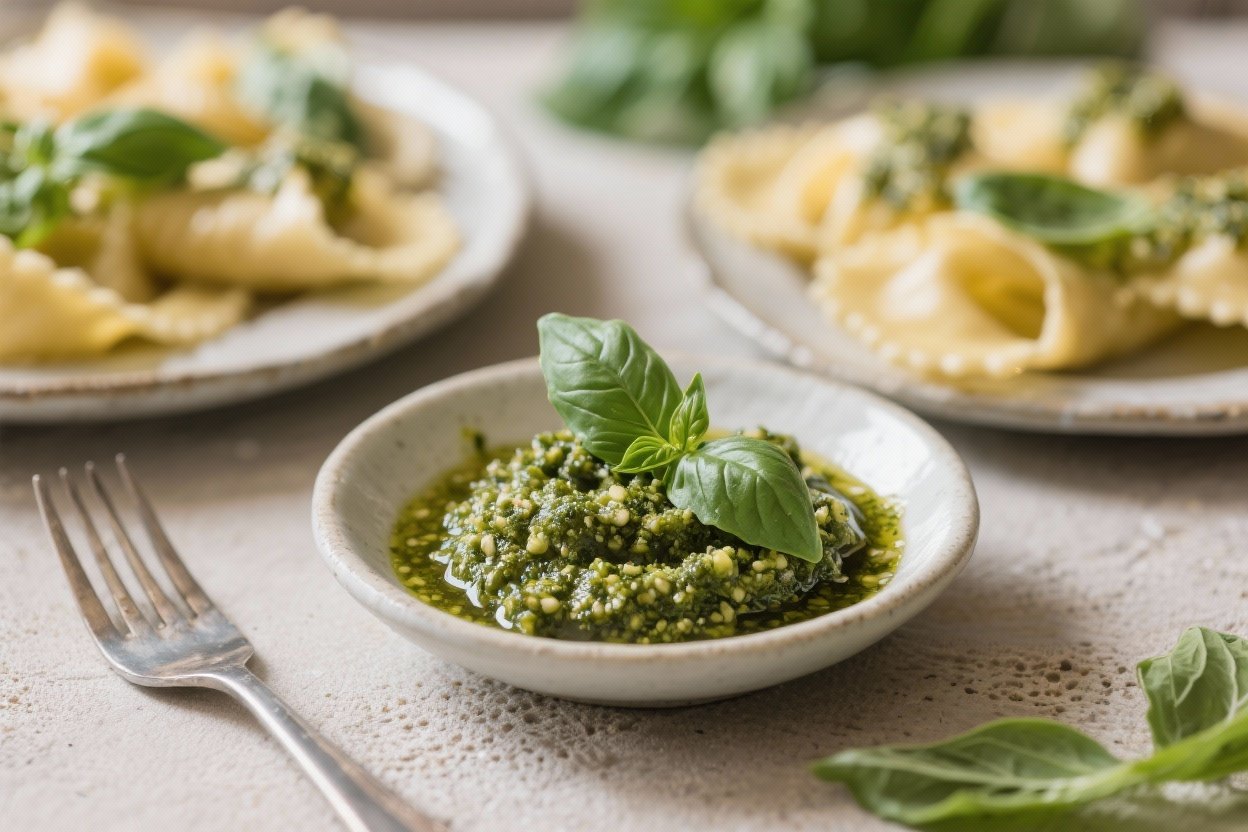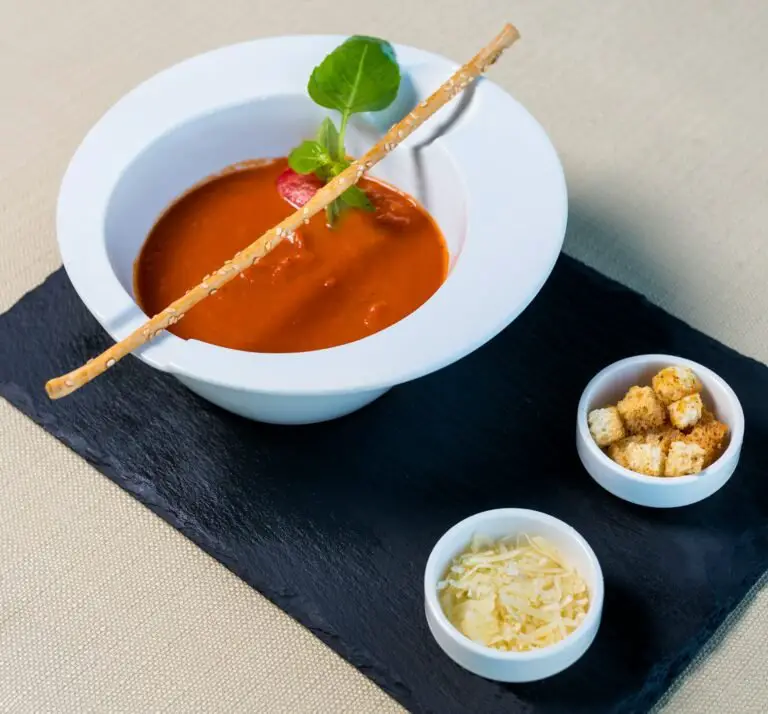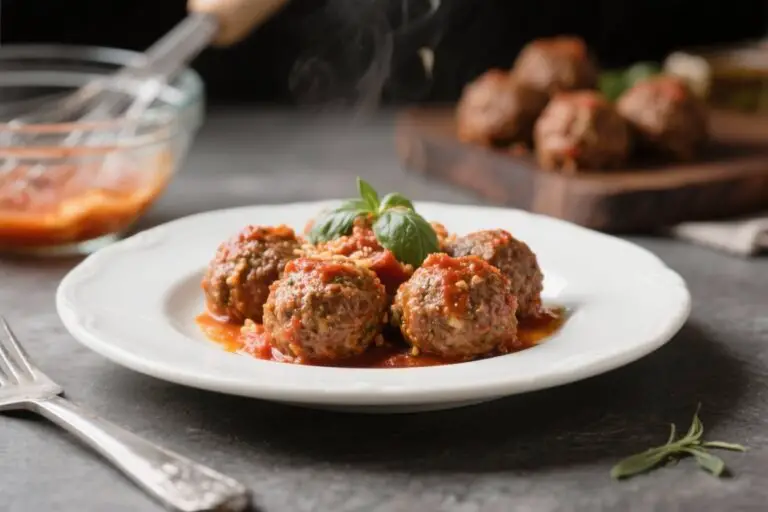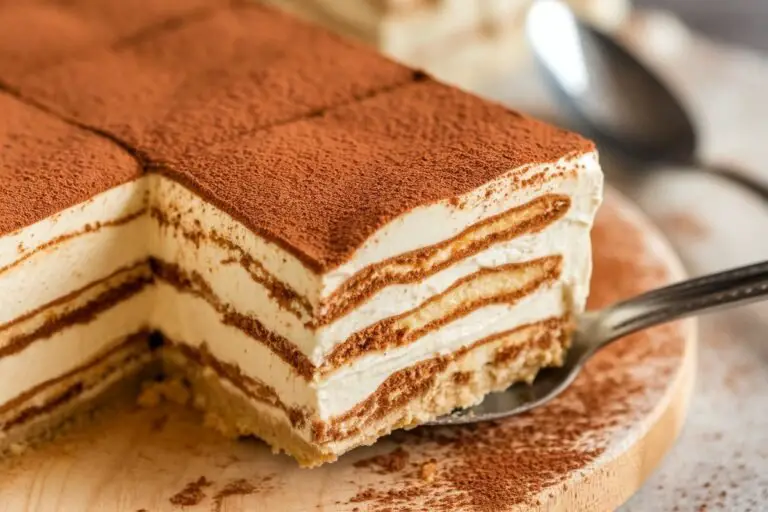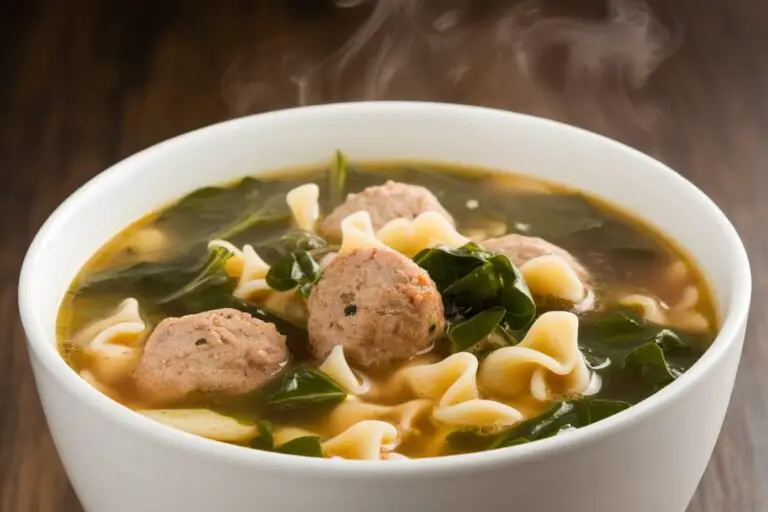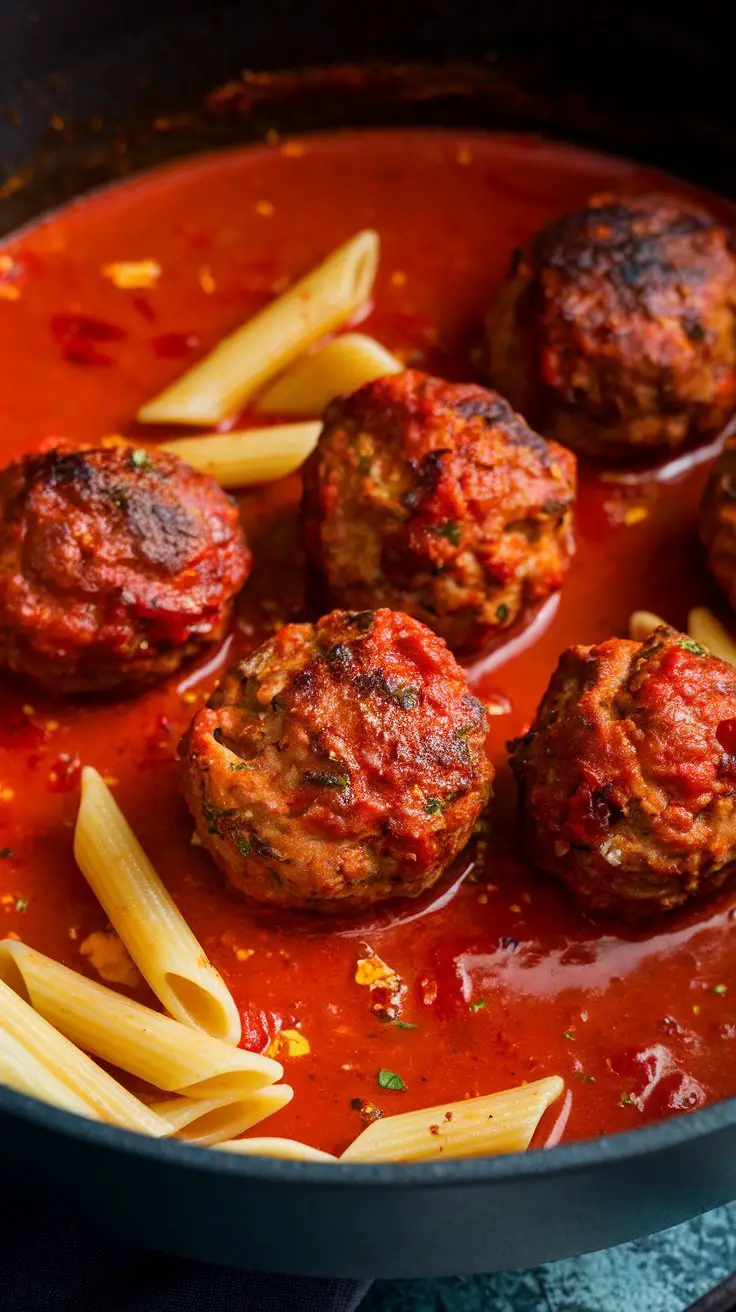Rustic Pesto Genovese (Basil Pesto) – Bright, Fresh, and Comforting
Pesto Genovese is one of those sauces that instantly lifts a meal. It’s fragrant, nutty, and full of fresh basil flavor that tastes like summer. This rustic version leans on simple ingredients and a gentle technique to protect that bright green color and delicate aroma.
You don’t need fancy equipment, just a bit of care and good ingredients. Toss it with pasta, swipe it on warm bread, or spoon it over grilled vegetables and fish.
What Makes This Special

This pesto stays true to the Ligurian spirit: fresh basil, pine nuts, garlic, aged cheese, and good olive oil. The rustic touch comes from using a mortar and pestle or a low-speed blend to preserve texture and prevent bitterness.
📖 Get Access to 50+ Printable Smoothie Recipes Instantly! 🖨️
Boost your health with delicious smoothies! These easy-to-follow printable recipe eBooks are perfect for detoxing, fitness goals, and tasty plant-based living. Available for instant download on Etsy! 🌿✨
The result is creamy yet slightly coarse, with tiny flecks of nuts and cheese that keep each bite interesting. It’s also quick to make and easily adaptable to what you have on hand.
What You’ll Need
- Fresh basil leaves (about 2 packed cups; ideally small-leaf basil like Genovese)
- Pine nuts (3 tablespoons; lightly toasted for extra depth)
- Garlic (1 small clove; 2 if you like a stronger kick)
- Parmigiano Reggiano, finely grated (1/2 cup)
- Pecorino Romano, finely grated (2 tablespoons)
- Extra-virgin olive oil (about 1/2 cup, plus more as needed)
- Kosher salt (to taste)
- Freshly ground black pepper (optional)
- Ice water (1–2 teaspoons, optional, to help keep the color bright)
- Lemon zest or juice (optional; a tiny squeeze or pinch for balance)
Step-by-Step Instructions
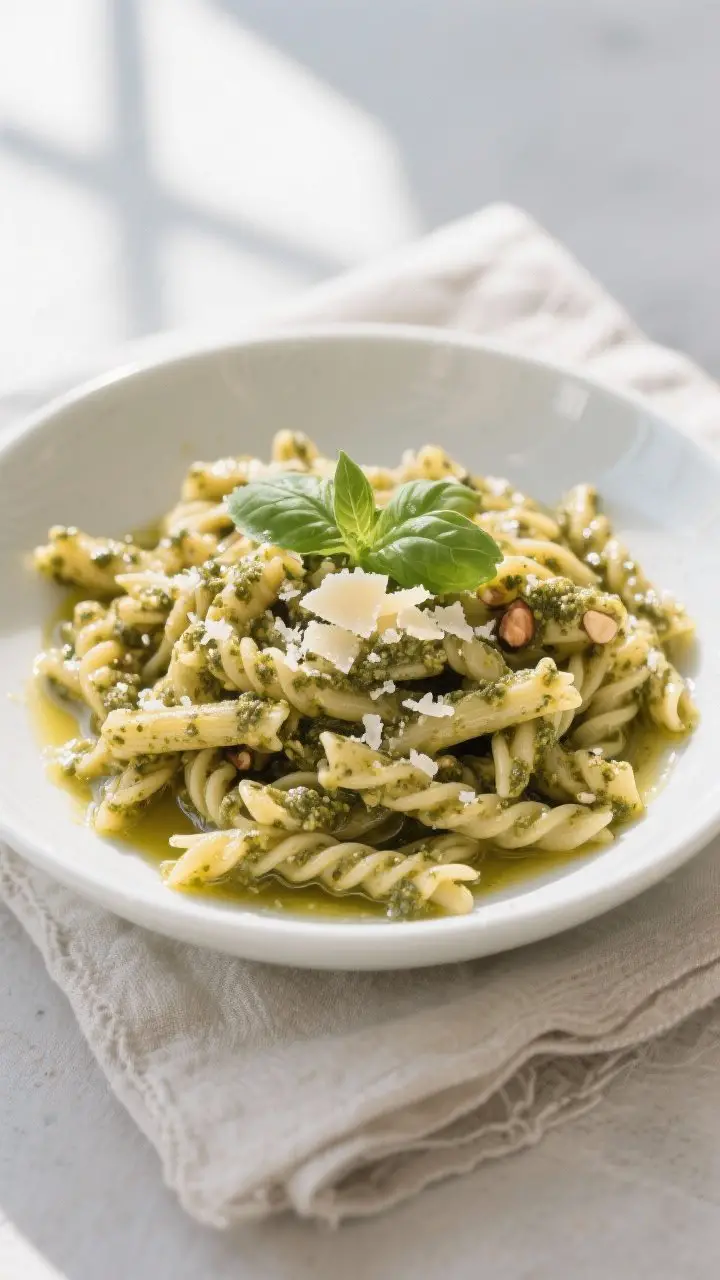
- Prep the basil. Rinse quickly, then pat completely dry. Any water left on the leaves will thin the sauce and dull the flavor.
- Lightly toast the pine nuts. Warm them in a dry skillet over low heat until just golden and aromatic, 2–3 minutes.
Let them cool to room temperature.
- Mash the garlic with salt. In a mortar and pestle, crush the garlic with a pinch of salt until it becomes a smooth paste. If using a food processor, pulse the garlic and salt a few times to break it down without heating.
- Add the pine nuts. Pound or pulse until the nuts are mostly broken, leaving some texture. You want a coarse, creamy base, not a paste.
- Work in the basil. Add the basil in batches.
If using a mortar, bruise and grind leaves against the sides with a gentle circular motion. If using a processor, pulse in short bursts to avoid heat. Add a teaspoon of ice water if the mixture looks dull.
- Incorporate the cheeses. Stir or pulse in Parmigiano and Pecorino until just combined.
The mix should be thick and spreadable.
- Stream in olive oil. Add oil gradually while stirring or pulsing the mixture. Aim for a loose, spoonable consistency. Adjust with more oil as needed.
- Season and brighten. Taste and add salt as needed.
If desired, add a whisper of lemon zest or a tiny squeeze of juice to lift the flavors without making it taste lemony.
- Use immediately or store. For pasta, loosen the pesto with a splash of warm pasta water before tossing. Otherwise, spoon it into a jar and level the top.
Storage Instructions
- Refrigerator: Transfer pesto to a small jar and smooth the surface. Cover with a thin film of olive oil to prevent browning.
Seal and refrigerate for up to 4–5 days.
- Freezer: Spoon into ice cube trays or small containers, top with a bit of oil, and freeze. Once solid, move cubes to a freezer bag. Use within 2–3 months.
- Reviving: Thaw gently in the fridge.
Stir in a splash of olive oil or warm water to bring back the silky texture.

Health Benefits
- Heart-healthy fats: Extra-virgin olive oil provides monounsaturated fats that support cardiovascular health.
- Antioxidants: Basil is rich in polyphenols and vitamin K, while olive oil adds additional antioxidants.
- Protein and calcium: Parmigiano and Pecorino contribute protein, minerals, and savory depth, so a little goes a long way.
- Portion-friendly flavor: Pesto is intensely flavored, which helps you use less overall sauce while still feeling satisfied.
What Not to Do
- Don’t overheat the pesto. Heat can turn basil dark and bitter. Avoid running a processor continuously and never simmer pesto.
- Don’t skip drying the basil. Excess water waters down flavor and changes the texture.
- Don’t over-garlic it. A small clove goes a long way. Too much garlic can dominate the delicate basil.
- Don’t use harsh or stale oil. Bitter, old, or overly peppery oil will overshadow the sauce.
Use fresh, balanced extra-virgin olive oil.
- Don’t add cheese during cooking. If tossing with hot pasta, remove the pot from heat before mixing to avoid clumping.
Variations You Can Try
- Nut swap: Use walnuts, almonds, or cashews if pine nuts are pricey. Toast lightly for best flavor.
- No-nut option: Use toasted sunflower seeds or skip nuts and add extra cheese for body.
- Dairy-free: Replace cheese with nutritional yeast and a pinch of miso for umami richness.
- Herb blend: Mix basil with parsley, mint, or arugula when basil is scarce. Keep basil as the star if you can.
- Lemon basil twist: Add a bit more lemon zest and a few leaves of lemon basil for a brighter profile.
- Spicy kick: A pinch of red pepper flakes adds warmth without overpowering.
FAQ
Can I make pesto without a mortar and pestle?
Yes.
Use a food processor or blender, but pulse in short bursts to avoid heating the basil. A blender can emulsify too finely, so stop early for a rustic texture.
Why does my pesto turn brown?
Oxidation is the culprit. Keep ingredients cold, work quickly, and cover the finished pesto with a thin layer of olive oil.
A teaspoon of ice water during blending can also help preserve color.
What pasta pairs best with pesto?
Trofie and trenette are traditional, but spaghetti, fusilli, and orecchiette work well. Save some pasta water to loosen the sauce and help it cling.
Can I use pre-grated cheese?
It’s fine in a pinch, but freshly grated cheese melts into the sauce better and tastes cleaner. Avoid anti-caking blends if possible.
Is it safe to freeze pesto with cheese?
Yes.
The texture may change slightly after thawing, but it remains delicious. If you prefer, freeze it without cheese and stir in fresh cheese after thawing.
How much sauce should I use per serving?
Start with about 2 tablespoons per person and adjust to taste. Add warm pasta water to create a silky emulsion rather than piling on more pesto.
Can I reduce the garlic?
Absolutely.
Use half a clove or blanch the clove in boiling water for 10 seconds to mellow the bite.
What olive oil should I choose?
Pick a balanced extra-virgin olive oil with fruity notes and low bitterness. Strongly peppery oils can overwhelm the basil.
Should I wash the basil?
Yes, but dry it thoroughly. Spin it and pat with a towel.
Moisture dilutes flavor and affects the emulsion.
Can I serve pesto warm?
Serve it at room temperature or gently warmed by mixing with hot pasta off the heat. Never simmer pesto directly in a pan.
Final Thoughts
Rustic Pesto Genovese is all about balance: bright basil, nutty richness, and a velvet finish from good olive oil. With a light hand and fresh ingredients, you can make a sauce that transforms simple meals into something special.
Keep the technique gentle, season thoughtfully, and let the basil shine. Once you’ve made it at home, you’ll never look at store-bought jars the same way again.

